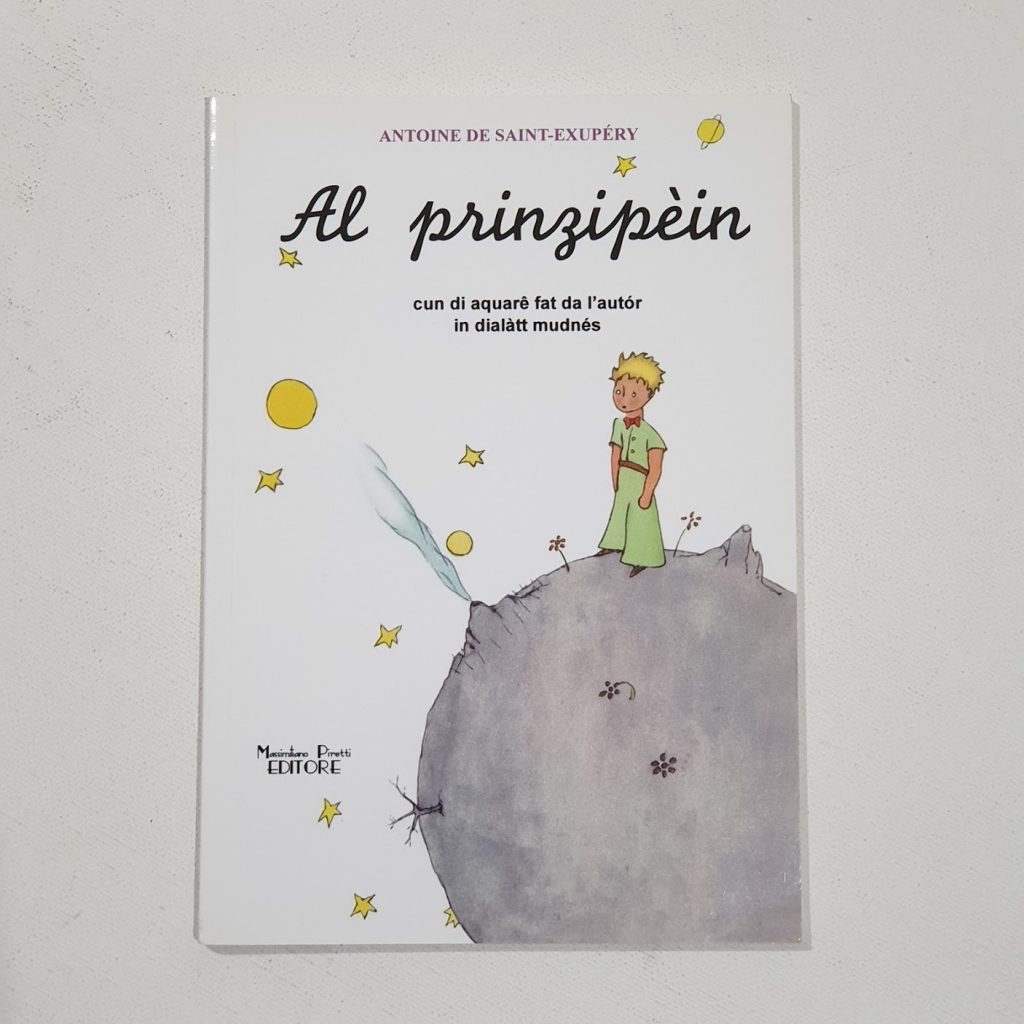
Al Prinzipèin — in Modenese.
Emilian Modenese, or simply Modenese, is a vibrant and historically rich variety of the Emilian language, part of the larger Emilian-Romagnol branch of the Gallo-Italic languages spoken in northern Italy. Rooted in the city of Modena and its surrounding province in Emilia-Romagna, Modenese carries centuries of linguistic evolution shaped by Roman heritage, Lombard and Frankish influence, and the distinct municipal culture that flourished under the Este dynasty, one of Italy’s most illustrious Renaissance courts. Though often overshadowed by Standard Italian, Modenese is no mere dialectal curiosity—it is a living language with its own grammatical structure, phonology, and expressive nuances, closely related to neighbouring Emilian varieties such as Bolognese, Reggiano, and Parmigiano, yet unmistakably marked by local sound shifts, vocabulary, and idiomatic colour.
Historically, Modenese thrived both in daily life and in the arts, serving as the language of marketplaces, local governance, theatre, and popular literature. The people of Modena, long proud of their civic identity and cultural sophistication, have traditionally used their local language to express humour, sharp social commentary, and the earthy charm of rural and urban Emilia alike. This is evident in folk songs, carnival performances, and poetic traditions where Modenese lends itself beautifully to wit, satire, and lyrical playfulness. Its sound is often described as softer and more melodious compared to the rougher, more guttural tones of other Gallo-Italic varieties, a reflection of Modena’s long-standing artistic and culinary refinement.
Culturally, Modenese speakers inhabit a world renowned for its gastronomic and mechanical excellence—this is the land of balsamic vinegar, tortellini, and Ferrari, where local pride is intertwined not only with food and industry but with language itself. While Italian reigns supreme in formal settings, Modenese survives robustly in family life, local festivals, and informal communication, acting as a badge of regional belonging and intergenerational connection. Like other Emilian languages, it shares deep roots with its linguistic cousins across the Po Valley, yet internal diversity—shaped by historical city rivalries, trade routes, and micro-regional identities—has ensured that each Emilian variety retains its distinctiveness.


